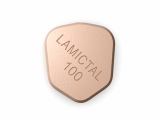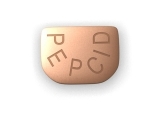How to apply to pharmacy fellowships
Applying for pharmacy fellowships is an important step for pharmacy professionals who are looking to gain specialized knowledge and experience in a particular area of pharmacy practice. These highly competitive programs offer advanced training opportunities in various fields, such as clinical pharmacy, research, administration, and industry.
To successfully apply for pharmacy fellowships, it is important to carefully follow each step of the application process. The first step is to research the available fellowship programs and identify those that align with your career goals and interests. This can be done by reviewing the websites of different institutions or organizations that offer fellowships, attending career fairs, and networking with alumni or current fellows.
Once you have identified the fellowship programs you are interested in, the next step is to compile a strong application package. This typically includes a well-written curriculum vitae (CV) or resume that highlights your relevant experiences, achievements, and skills. It is important to tailor your CV to each specific fellowship program you are applying to, focusing on the aspects of your background that are most relevant to the program's objectives and requirements.
In addition to your CV, most fellowship programs also require applicants to submit letters of recommendation. It is important to choose individuals who know you well and can speak to your skills, accomplishments, and potential as a pharmacy fellow. Consider asking pharmacists or professors who can provide detailed and insightful recommendations.
Another critical component of the application is the personal statement. The personal statement should concisely and convincingly explain why you are interested in the specific fellowship program and how it aligns with your career goals. This is an opportunity to showcase your passion, dedication, and unique qualifications that make you a strong candidate for the fellowship.
Research available pharmacy fellowships
When applying for pharmacy fellowships, the first step is to thoroughly research the available options. Start by looking at reputable websites, such as professional pharmacy associations or university websites, to gather information about different pharmacy fellowships. Take note of the eligibility criteria, application deadlines, and program duration for each fellowship.
Use online resources such as fellowship directories or databases to expand your search. These resources can provide a comprehensive list of fellowships offered by various institutions and organizations. Utilize search filters to narrow down the options based on your specific interests, location preferences, or specialization areas.
Read in-depth descriptions of each fellowship program to gain a better understanding of the goals, objectives, and requirements. Look for fellowships that align with your career goals and interests in pharmacy practice, research, or academia. Pay attention to the program curriculum, as well as any unique opportunities or benefits offered through the fellowship.
Consider reaching out to current or former pharmacy fellows to learn more about their experiences. They can provide valuable insights into the application process, the quality of the program, and the overall benefits they gained from their fellowship. Networking with pharmacy professionals or attending pharmacy conferences can also provide opportunities to gather information about different fellowships.
Creating a spreadsheet or a table to compare the various pharmacy fellowships can be helpful in organizing and prioritizing your choices. Take into account factors such as location, salary or stipend, mentorship opportunities, research resources, and potential career outcomes. This will ensure that you make an informed decision and select the pharmacy fellowships that best suit your needs and aspirations.
Determine eligibility requirements
Before applying for a pharmacy fellowship, it is important to determine the eligibility requirements set by the fellowship program. These requirements may vary depending on the program and institution, so it is crucial to thoroughly review the application guidelines and criteria.
Step 1: Review the educational qualifications required for the fellowship. Most programs require applicants to have completed a Doctor of Pharmacy (PharmD) degree from an accredited institution. Some may also require additional certifications or training in specific areas of pharmacy practice.
Step 2: Check if there are any specific experience requirements. Some pharmacy fellowship programs may require a certain number of years of post-PharmD practice experience, while others may prioritize applicants with research or teaching experience.
Step 3: Determine the eligibility criteria related to licensure. Many pharmacy fellowships require applicants to be licensed pharmacists in the state where the fellowship is located. It is important to confirm if the fellowship program accepts applications from pharmacists licensed in other states or if they require a specific type of licensure.
Step 4: Evaluate any additional eligibility criteria. This may include language proficiency, citizenship or residency requirements, and other specific qualifications or certifications. Make sure to meet all the necessary criteria before proceeding with the application.
By understanding the eligibility requirements, you can ensure that you are eligible to apply for the pharmacy fellowship program and increase your chances of being invited for an interview. It is important to double-check all the requirements and address any potential discrepancies before submitting the application.
Prepare application materials
Before applying for a pharmacy fellowship, it is important to gather all necessary application materials. These materials will help the selection committee to assess your qualifications and suitability for the fellowship opportunity.
Curriculum Vitae (CV): A well-developed CV is an essential part of your application. It should highlight your academic achievements, research experience, clinical rotations, and any leadership roles you may have held in pharmacy organizations or professional associations.
Letter of intent: This is a personal statement where you can articulate your interest in the fellowship and explain why you are a good fit for the program. Be sure to demonstrate your passion for pharmacy practice and research, as well as your future goals and how the fellowship will help you achieve them.
Letters of recommendation: It is important to choose recommenders who can speak to your abilities, skills, and dedication to pharmacy practice and research. Ask professionals who have worked closely with you, such as faculty mentors or preceptors, to write a letter on your behalf. Aim to have at least three strong letters of recommendation.
Official transcripts: Contact your pharmacy school and request official copies of your transcripts. These should be sent directly to the fellowship program and provide evidence of your academic performance.
Additional documents: Depending on the specific requirements of the fellowship program, you may also need to prepare additional materials such as a writing sample, a research abstract, or a portfolio of clinical experiences. Review the application guidelines carefully and ensure that you submit all the requested documents.
Organizing and preparing these application materials ahead of time will help you present a strong and comprehensive application package. Make sure to proofread your documents for any errors or typos before submitting them, as attention to detail is important in the application process.
Submit application
Once you have gathered all the required documents, it's time to submit your application for pharmacy fellowships. Here are the steps you need to follow:
1. Review the application requirements
Before submitting your application, carefully review the requirements set by the fellowship program. Make sure you have all the necessary documents, such as CV/resume, personal statement, letters of recommendation, and transcripts.
2. Prepare your application package
Compile all the required documents into a single package. Make sure your CV/resume is up-to-date and tailored to the fellowship program. Write a compelling personal statement that highlights your qualifications, experiences, and future goals in pharmacy. Request letters of recommendation from professors, mentors, or employers who can speak to your abilities and potential.
3. Submit your application online
Most fellowship programs have an online application system. Fill out the application form, providing accurate and complete information. Attach your application package as required, ensuring that all documents are properly formatted and clearly labeled.
4. Pay attention to deadlines
Make sure to submit your application before the stated deadline. Late submissions may not be considered. Keep track of important dates and set reminders to avoid missing any deadlines.
5. Follow up with the program
After submitting your application, you may want to follow up with the fellowship program to confirm that they have received all your documents. This shows your continued interest and can help ensure that your application is being thoroughly reviewed.
By following these steps, you can submit a strong and well-prepared application for pharmacy fellowships. Good luck!
Attend interviews
Once you have submitted your applications for pharmacy fellowships, the next step is to attend interviews. This is your opportunity to showcase your skills, knowledge, and passion for pharmacy. The interview process may vary depending on the fellowship program, but there are some common steps you can take to prepare.
Research the program
Prior to the interview, take the time to thoroughly research the fellowship program. Familiarize yourself with the program's mission, goals, and values. This will help you tailor your responses during the interview to align with the program's objectives.
Anticipate interview questions
Prepare for the interview by anticipating the types of questions you may be asked. Think about your experiences, accomplishments, and challenges in pharmacy, and be ready to articulate them during the interview. Practice answering questions that assess your problem-solving skills, leadership abilities, and commitment to patient care.
Showcase your strengths
During the interview, emphasize your strengths and highlight how they align with the fellowship program's requirements. Discuss your research experience, clinical skills, and any leadership roles you have held. Provide specific examples of how you have contributed to improving patient outcomes or implementing innovative pharmacy practices.
Ask questions
At the end of the interview, you will usually have the opportunity to ask questions. Take advantage of this time to inquire about specific aspects of the fellowship program that interest you. This shows your enthusiasm and engagement with the program.
Remember to dress professionally, maintain good eye contact, and exhibit confident body language during the interview. Following these steps will help you make a positive impression and increase your chances of securing a pharmacy fellowship.
Accept fellowship offer
Once you have been selected for a pharmacy fellowship, you will need to officially accept the offer. This step is crucial in securing your position and beginning the next phase of your career. Here are the steps to accept a pharmacy fellowship offer:
- Review the offer: Carefully review the details of the offer, including the duration of the fellowship, the salary, benefits, and any other terms and conditions.
- Confirm your acceptance: Reach out to the fellowship program director to confirm your acceptance. You can do this via email or phone, depending on the preferred method of communication.
- Negotiate if necessary: If there are certain aspects of the offer that you would like to negotiate, such as the salary or start date, you can discuss this with the program director. Be prepared with your reasons for negotiation and be professional in your approach.
- Sign the offer letter: Once you and the program director have reached an agreement on the terms, you will be required to sign an offer letter. This letter serves as a formal acknowledgement of your acceptance of the fellowship offer.
- Submit any required documents: Along with the offer letter, there may be additional documents or forms that you will need to submit, such as background checks or immunization records. Make sure to complete and submit these documents in a timely manner.
- Notify other programs: If you have received offers from other pharmacy fellowship programs, it is professional courtesy to notify them of your decision to accept another offer. This allows them to proceed with selecting an alternate candidate.
- Prepare for the fellowship: Once you have accepted the offer, begin preparing for your fellowship by familiarizing yourself with the program's expectations, requirements, and any necessary preparations, such as obtaining licensure or completing orientation materials.
Accepting a pharmacy fellowship offer is an important step in your career development. By following these steps, you can ensure a smooth transition into your fellowship and set yourself up for success in the field of pharmacy.
Follow us on Twitter @Pharmaceuticals #Pharmacy
Subscribe on YouTube @PharmaceuticalsYouTube




Be the first to comment on "How to apply to pharmacy fellowships"